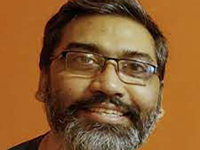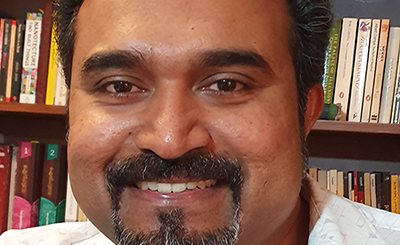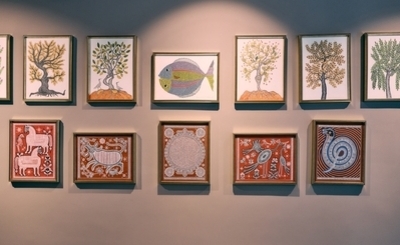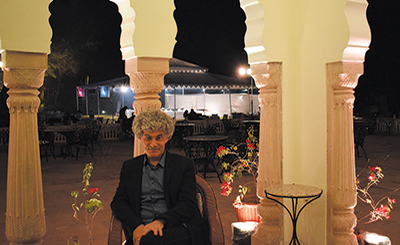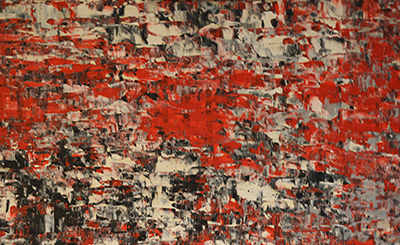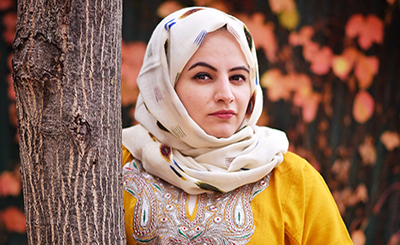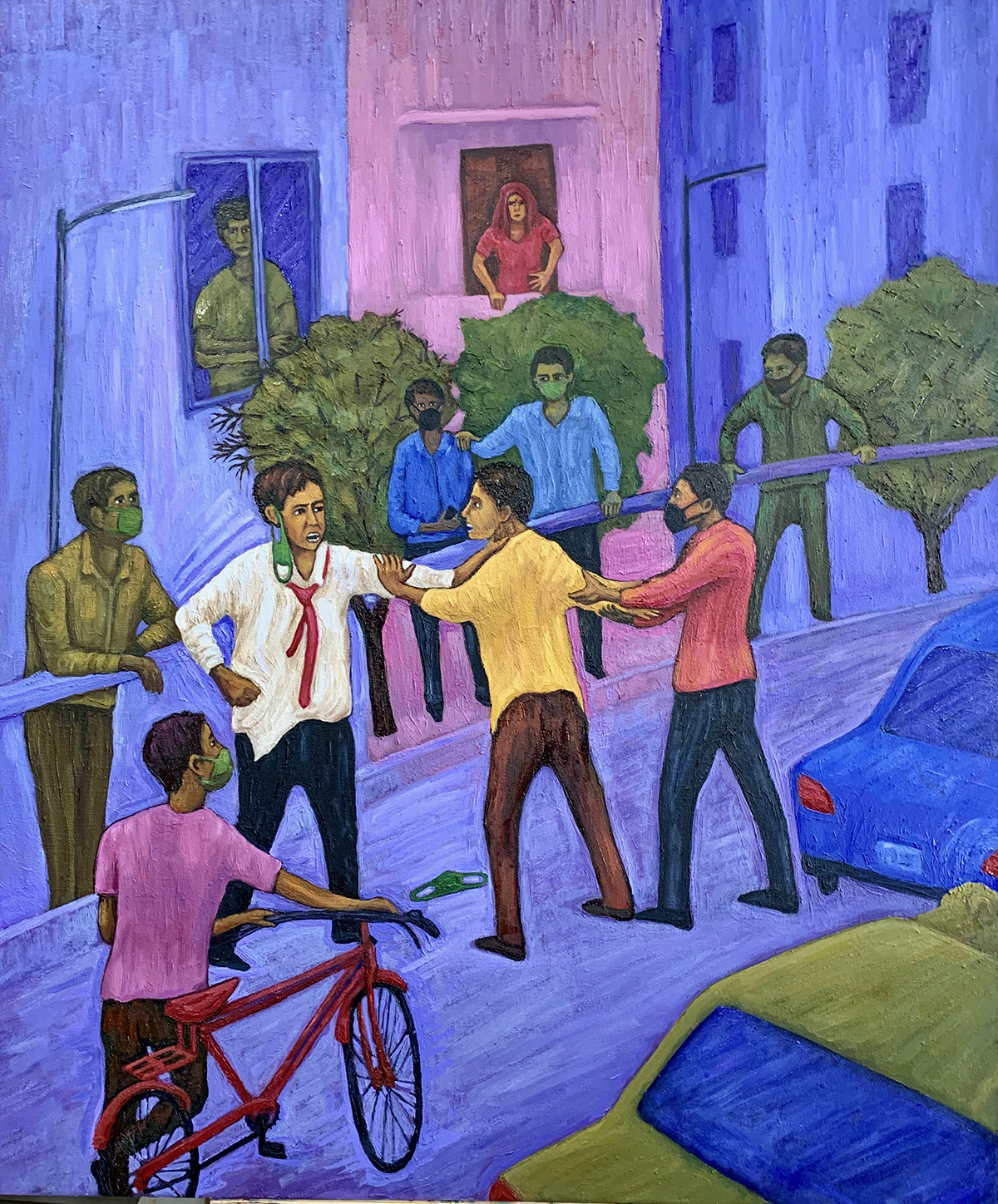
‘Ringside View’ by Ranjan Kaul
In his works, the artist chronicles unseen snapshots from the lives of the common person
The role of a curator demands many things. During my Post Graduate Diploma in Cultural Management at the Indira Gandhi National Centre for the Arts, curator and art critic Premjish Achari, in his class, defined this role in a way that stayed with me forever. He mentioned how the curation could have its roots in the age-old identity of the curator at a chapel or church, tasked with taking care of the arts and artefacts of the faith under his supervision. The role of the curator, thus, is of the one who is responsible to take care. As I explore my contribution as a curator, I perform multiple tasks but Ranjan Kaul’s fourth solo exhibition of paintings titled, “A Ringside View”, helped me to test Premjish’s version quite well. As a curator of the 21st century, is it not my responsibility to take care of the artists and the artworks that I step out to curate?
Ranjan Kaul, like me, is an engineer by education. He moved on to the publishing industry and left it at the peak of his career as the Managing Director of Oxford University Press India to pursue art. One of the main reasons of him opting to leave his professional career was his insatiable desire to paint and create full time. He is a self-taught artist who trained his eyes to see/notice/observe and his hand to hold/move/create. This experiential learning came to good use as is reflected from the works he creates, and the themes he responds to and brings to the public’s eye through his art. His work has been around the marginalised sections of society; the people and practices that exist on a daily basis around us all the time as we conveniently turn a blind eye to them, in pursuit of sanity from the challenges that plague the ignored. Be it the manual scavenging, the sex workers, the ills of society and the migrant working population that throngs the streets and crevices of the urban, large-size dazzling cities.
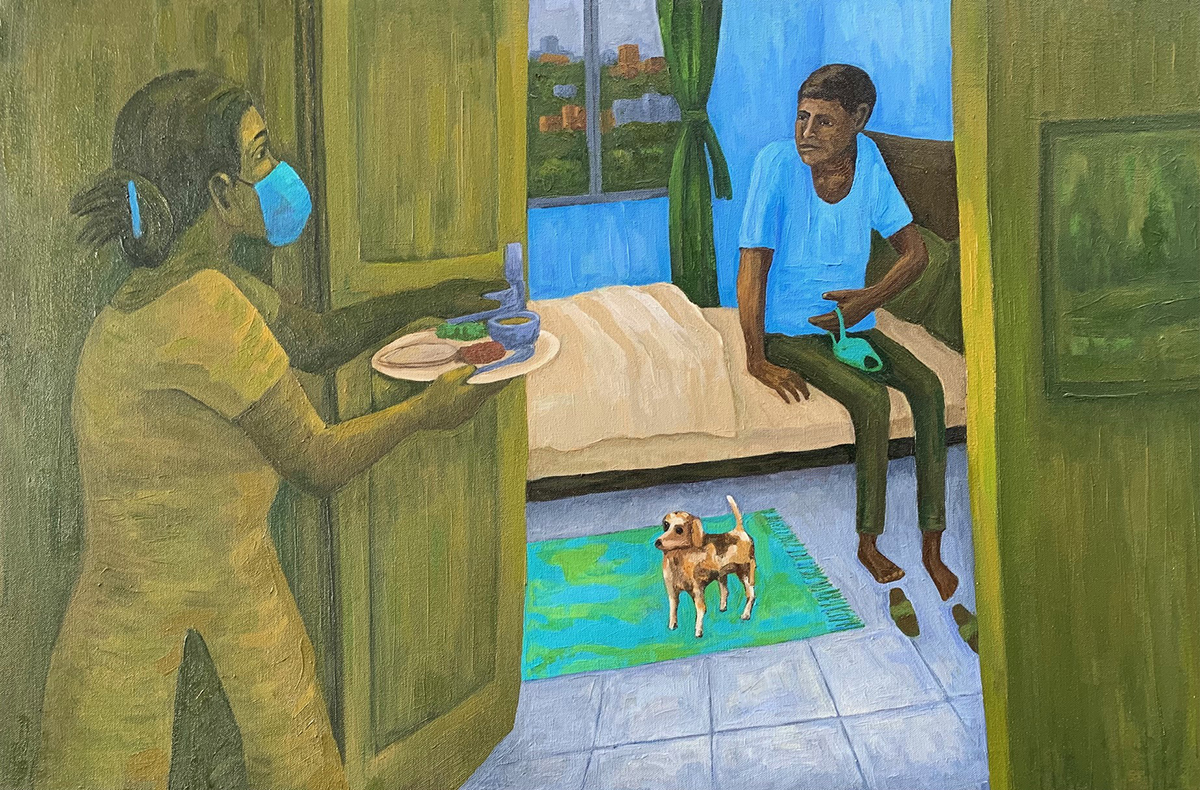
Happy Quarantine Free, Ranjan Kaul
I had curated Ranjan’s works in a solo show ‘Where Do They Belong?’ in May-June 2019 during IAM — Identity Art Marathon, the annual multi-disciplinary art festival that I organise at the Arpana Caur Fine Arts Gallery, Siri Fort. I have been privy to not only his works and themes but also to his thought process on a variety of topics and approach to life through our association, long discussions on life, art and society, and working together with him since March 2020 on the online art blog, www.artamour.in, which completed its first anniversary of public existence in October. Together we curated an exhibition ‘An Imaginal Affair’ of 40 of the blog’s featured artists. We continue to script a tale of understanding and disseminating knowledge about art and artists to the society together. This close interaction gave me critical insights into the personality of the individual as well. My interview of Ranjan with his works in his studio for the YouTube channel ‘ArtKeeper’, run by Soumen Bhowmick, also opened his art to me first hand.
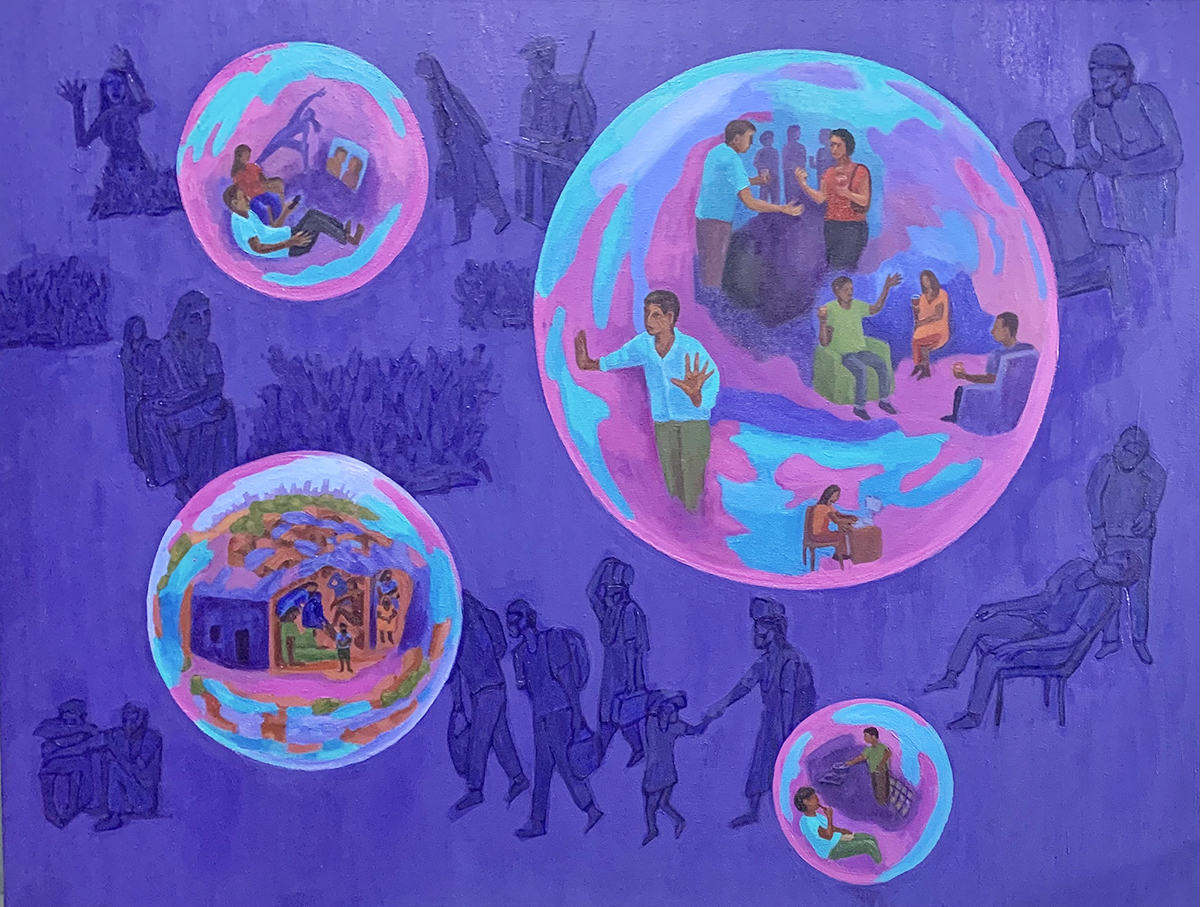
Bubbles, Ranjan Kaul
When Ranjan decided to hold this exhibition, he requested me to curate it. We sat down in his studio and looked at all his works and made a list of the works to be included in the show, based on the space available in the gallery and on the planned theme. Ranjan had already been working on the overlooked and disadvantaged sections of society, much before the pandemic caught the world in its vice and unfortunate sequence of events which triggered the migrant population to migrate back to their respective hometowns from the cities which no longer offered any help, money or safety. The scenes of thousands of people — men, women and children walking, cycling, hitchhiking and using any means possible to return to the homes they had left for want of a better life splashed across all sorts of media — print, online and television. The ignored suddenly held the titular role on all news channels. The apathy still continued though and after the second wave of the pandemic caused similar scenes but on a slightly lower level, the press and the consciousness of society moved on to more ‘important’ matters.
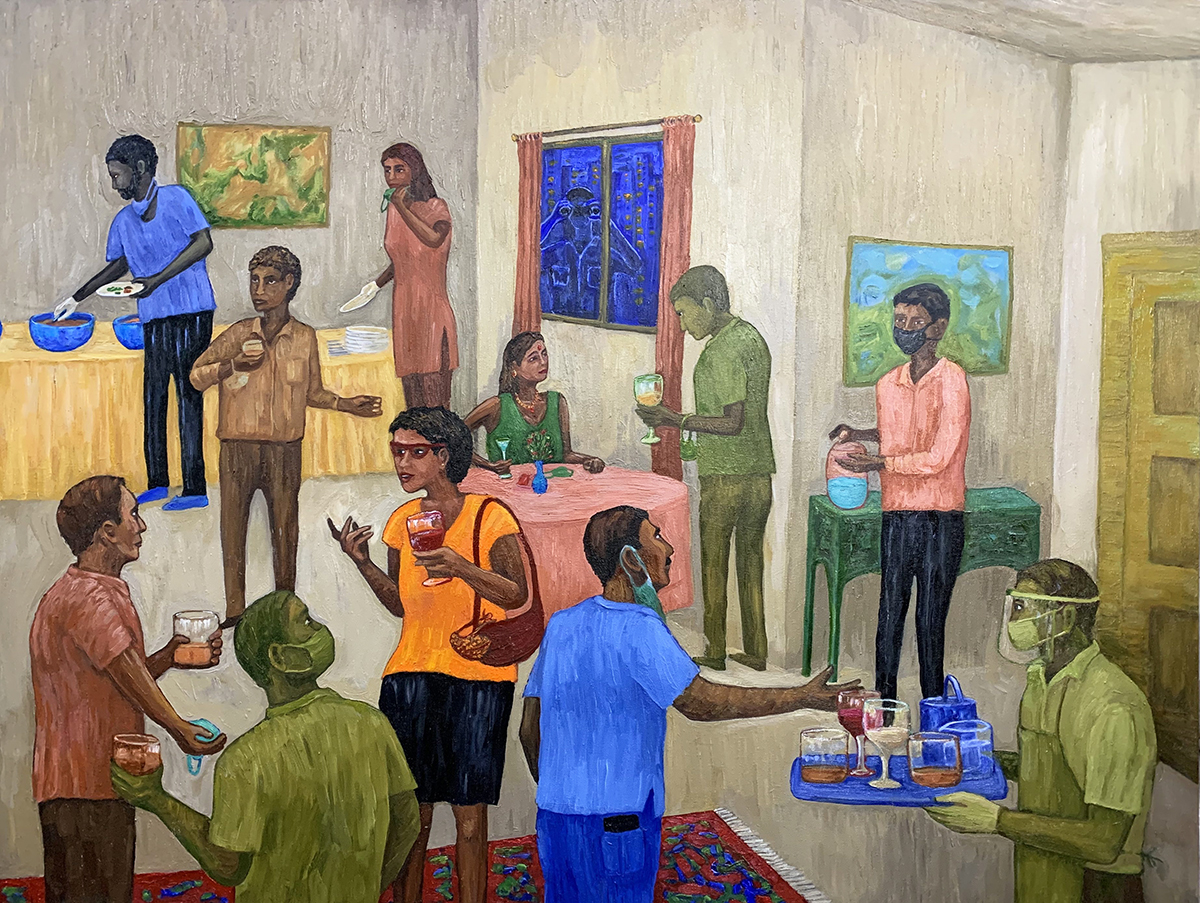
Cocktail Party I, Ranjan Kaul
Ranjan’s works ‘Supper’, Bright Spot’ and ‘A Little Help, Please’ (2018), ‘Home’ and ‘Shine (2017) look at the situation of the migrant workers finding space for rest on footpaths and in abandoned spaces, in full view and yet away from the eyes of the common passerby. Ranjan’s gaze of an observer caught these people in different modes of engagement with life. Ranjan had been using acrylic paints and a mix of acrylic and oils on canvas in these works. From his experiments in water colour in 2017 and 2018, we selected his works ‘A Dog’s Life’ (2018), which has humans in different sleeping poses on the ground and ‘Blue Bends’ (2017) which has the cycle rickshaw pullers in cramped sleeping positions on their static rickshaws. He’s shifting to using more of oils on canvas as he’s progressed over the years.
Once the pandemic hit us and the artist, like most others, was confined to the isolated space of his home, he started to imagine how the world would be for those left outside to fend for themselves. Joblessness, despair, and longing for a better world are common linkages in the recent works. Even the party scenes in ‘Cocktail Party I’, ‘Cocktail Party II’ and ‘In the Light of the Virus’ one senses the discomfort of the viral demon looming large on the psyche. ‘Cocktail Party II’ the only digitally created work is a satirical take on the incarcerated (in home detention) humans looking out at the animals having a gala time, partying in the open.
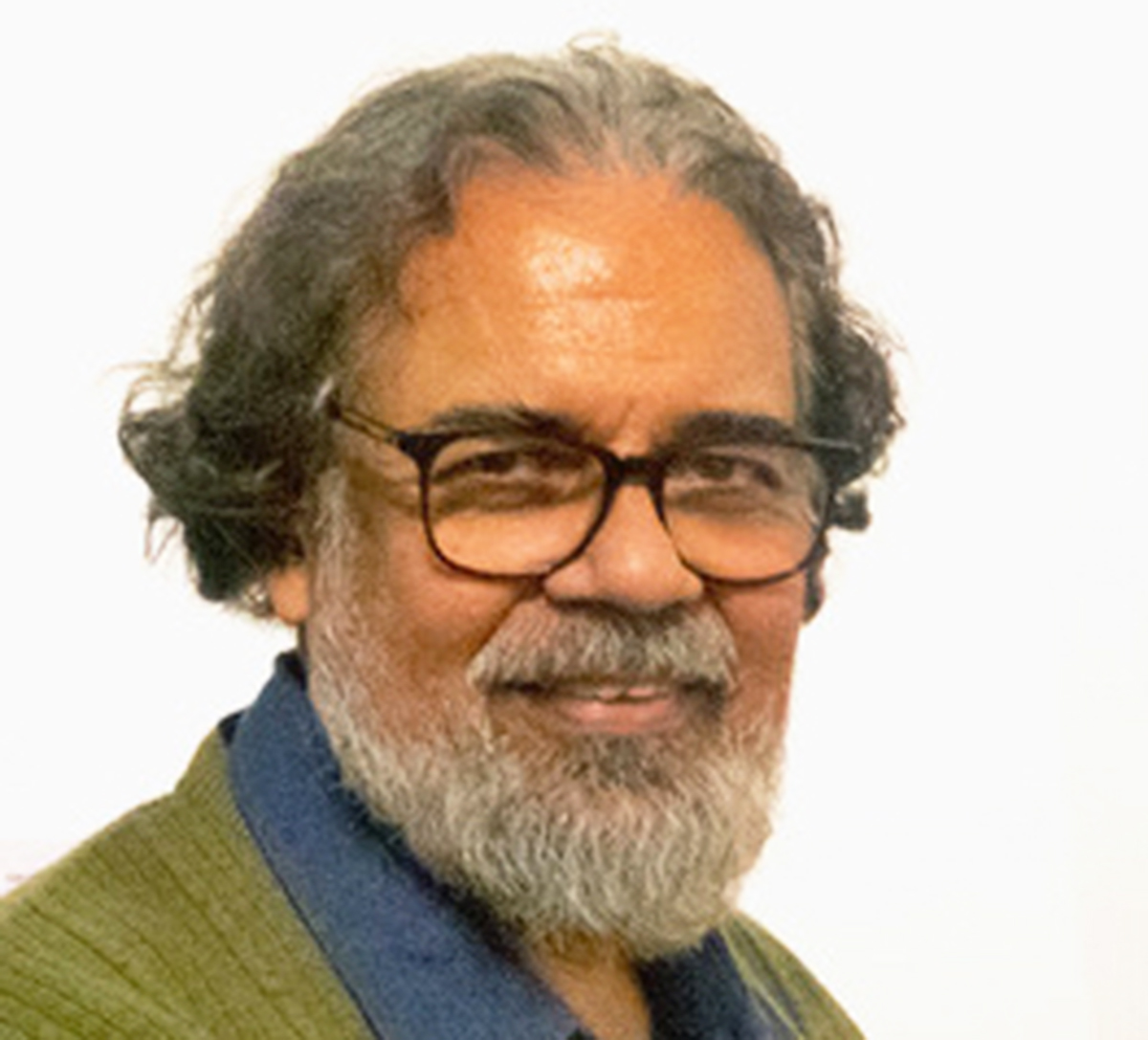
Ranjan Kaul
‘Twilight Zone’ looks at the challenge of empty roads with lumpen elements hanging around when even walking becomes difficult for women walking home after work. In his works one can see everything, every aspect as if from the artist’s vantage point of a keen observer, who is noticing everything but keeping his distance; never intervening, as if holding the ‘Ringside View’. In the work ‘Ringside’, the brawl happening is being watched by many, resolved by none! The artist makes a statement by chronicling the deliberately unseen snapshots from the lives of the common person. This is the least that he can do. As a visual chronicler, Ranjan creates very sensitive paintings that hold the pensive moments of lives lived on the fringes, never on the mainstream.
My role as the curator was revamped to a ‘curatorial advisor’ in this exhibition. I found this liberating as I was no longer trying to force my vision on the exhibition design or selection. Without a forced filter in place, it allowed me to learn what the artist was doing, why he wanted something to be done in a specific way or why he wished to choose one work over the other. Rather than working as a curator/creator I became a sounding board for the artist, empowering him to make his own choices having heard his own reasons behind them. I realized how the role of taking care of the artist, his views, choices and artworks became the most important thing for me. The pandemic has taught people many different things. Ranjan used the canvas to express his learning. I learnt to let go and absorb by curating this show and it helped me immensely to enjoy the process and the art. The response by the visitors since the day the show opened on November 11 was a testament of the choices taken resonating with the general public. The show was open till 18 November at the Open Palm Court Gallery at the picturesque and quite centrally located India Habitat Centre, Lodhi Road, New Delhi. Each conversation with the visitors opens up a new line of thought. At artamour, it has been our endeavour to engage the public with art. Ranjan’s solo show is helping the cause. We hope the ‘Ringside View’ will motivate people to engage with art as it uncovers the topics all of us see but disregard on a daily basis.
More from Arts
Comments
*Comments will be moderated



